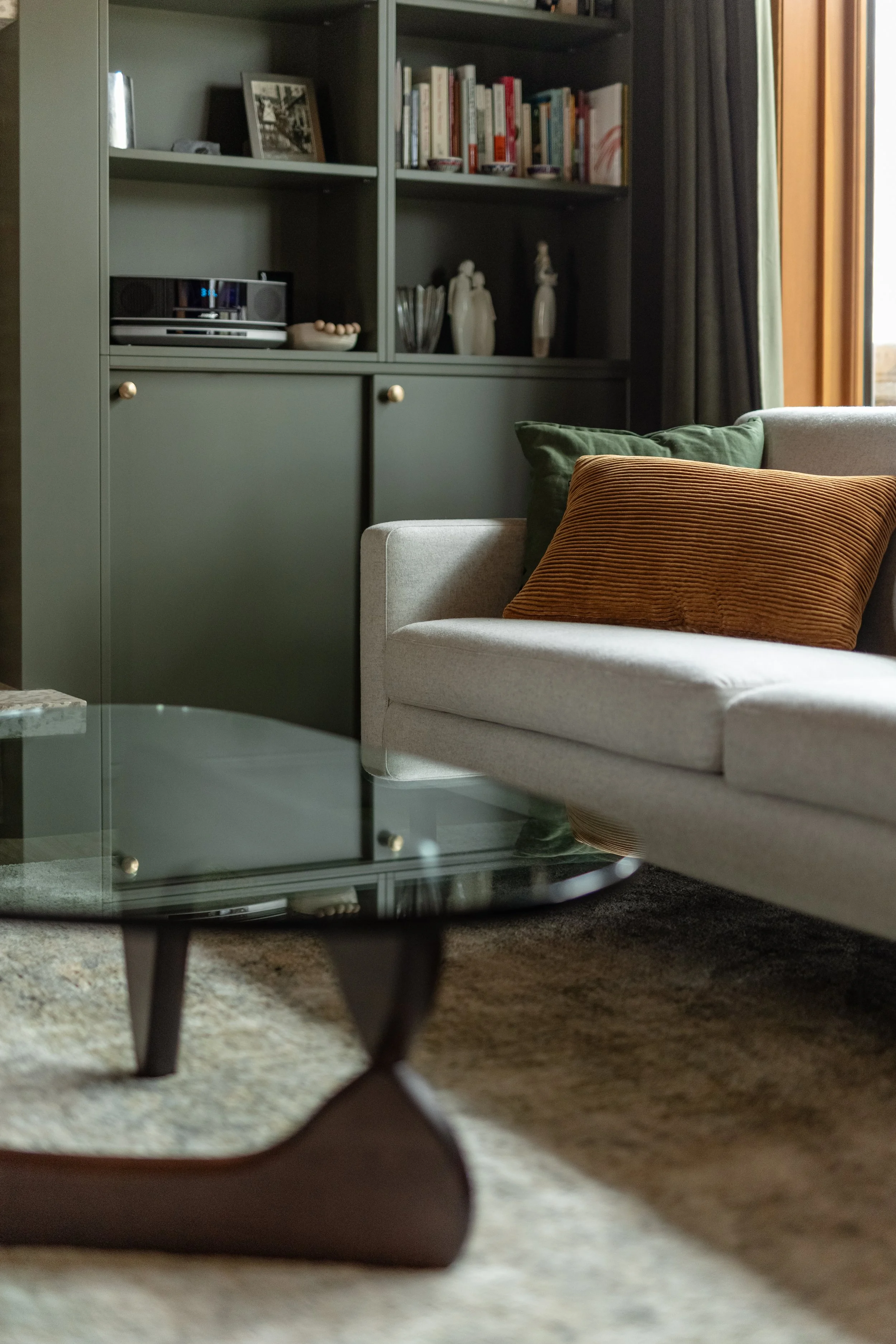Creating Comfort and Warmth Through Design Details
As the temperature drops and evenings stretch longer, our homes naturally become the heart of our days. We gather, unwind, and recharge within their walls, and the spaces we inhabit have a remarkable power to influence how we feel. True luxury isn’t about grand statements or lavish décor; it’s found in the small, thoughtful details that make a space feel deeply comforting.
At Bungalow, we believe comfort is the ultimate expression of luxury. Here’s how we create it.
Layering Texture for Tactile Warmth
The first step to designing a cozy, elevated space is mastering texture. Smooth marble meets the warmth of oak. Crisp linen sits against the softness of wool. These subtle contrasts create depth and richness that make a room feel alive.
When everything in a space feels too “perfect” or polished, it can fall flat, visually and emotionally. Texture adds dimension, drawing you in and inviting touch. It’s what makes a room feel real, not staged.
Design Tip: Try balancing sleek finishes (like stone, glass, or metal) with organic ones (like natural fibres, warm woods, or textured plaster). It’s the tension between these materials that creates visual warmth.
Lighting That Adapts to the Moment
Lighting has the power to completely transform a space, not just how it looks, but how it feels. Harsh overhead lighting can make even the most beautiful room feel cold, while layered lighting creates intimacy and mood.
We love incorporating three layers of light in every project:
Ambient lighting for overall glow
Task lighting for practicality
Accent lighting to highlight texture and architecture
The magic happens when light sources are dimmable and thoughtfully placed, creating soft pools of warmth that shift throughout the day.
Design Tip: Invest in dimmers. Even the most functional spaces, like kitchens, deserve the ability to shift from bright and energetic to calm and atmospheric.
The Power of Scent and Sound
Comfort isn’t only visual — it’s sensory. Subtle scent cues can create calm or warmth, while the right acoustic balance can make a space feel peaceful.
Natural materials like drapery, rugs, and upholstery don’t just look good — they also soften sound, creating a cocooning atmosphere that feels grounded. Layer that with a signature scent — perhaps cedar, amber, or fig — and you’ve added a memory-making element that defines home.
Design Tip: Choose a few natural materials that carry both texture and scent, like raw oak, leather, or wool. They age gracefully and add a quiet sense of familiarity.
Comfort Through Colour
Colour profoundly affects mood. While white walls will always have their place, soft neutrals, warm taupes, and muted greens evoke calm and depth. In Winnipeg’s long winters, we find that even a touch of warmth in wall colour or wood tone can make a home feel more welcoming.
Design Tip: Pay attention to undertones — even a “neutral” white can feel cold or inviting depending on the light and the materials it’s paired with.
The Human Touch
Finally, comfort comes from personalization — the story within your space. A framed note, a piece of art collected on a trip, or a well-loved book placed within reach adds soul to the design. These are the quiet details that make a home yours.
In a world that often celebrates perfection, we celebrate lived-in beauty. The home should not only look good but feel good — designed for real life, not just for photographs.
A Home That Feels Like a Hug
Luxury, at its core, is about how a space makes you feel. A beautifully designed room should feel like a soft exhale — grounded, warm, and deeply personal.
At Bungalow, our goal is to create homes that invite you to slow down and enjoy the richness of everyday life. The details we choose are never arbitrary — they’re the layers that bring your story to life.
Ready to create a home that feels as beautiful as it looks?
Let’s bring warmth and comfort into your space this winter.
👉 Book your Discovery Call to start designing your next chapter.
FURTHER READING









